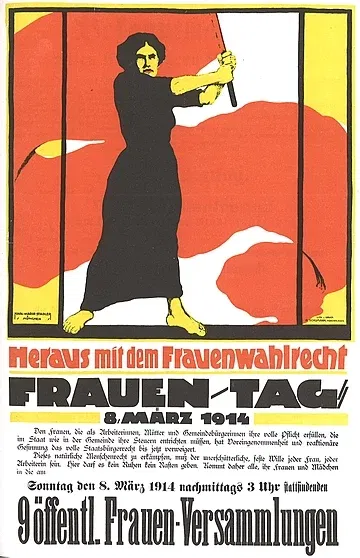International Women's Day - 8 March 2024
By Paul Whitelock
International Women's Day is celebrated annually on 8 March as a focal point in the women’s rights movement. IWD gives focus to issues such as gender equality, reproductive rights, and violence and abuse against women.

Spurred on by the universal female suffrage movement, IWD originated from labour movements in North America and Europe during the early 20th century.
The earliest version reported was a "Women’s Day" organised by the Socialist Party of America in New York City on 28 February , 1909.
This inspired German delegates at the 1910 International Socialist Women’s Conference to propose "a special Women's Day" be organised annually.

The following year saw the first demonstrations and commemorations of International Women's Day across Europe.
After the Russian Revolution in 1917, IWD was made a national holiday on March 8; it was subsequently celebrated on that date by the socialist movement and communist countries.
To start with the holiday was associated with far-left movements and governments until its adoption by the global feminist movement in the late 1960s.

IWD became a mainstream global holiday following its promotion by the United Nations in 1977. International Women's Day is a public holiday in several countries. The UN observes the holiday in connection with a particular issue, campaign, or theme in women's rights.
Whilst IWD is not an official holiday in most countries of Europe, it is celebrated nonetheless.
Several countries, including Uruguay, Spain, Italy, France and Algeria, have squares or other public spaces named after 8 March in reference to International Women's Day.

The theme for 2024 is:
Invest in Women: Accelerate Progress.
© Paul Whitelock
With thanks to:
Wikipedia for information and photos.
Tags:
8 March, abuse against women, communist, feminist, gender equality, female suffrage, IWD, International Socialist Women’s Conference, International Women's Day, Invest in Women, Paul Whitelock, reproductive rights, Russian Revolution, socialist, Socialist Party of America, United Nations, violence, "Women’s Day", women's rights,


